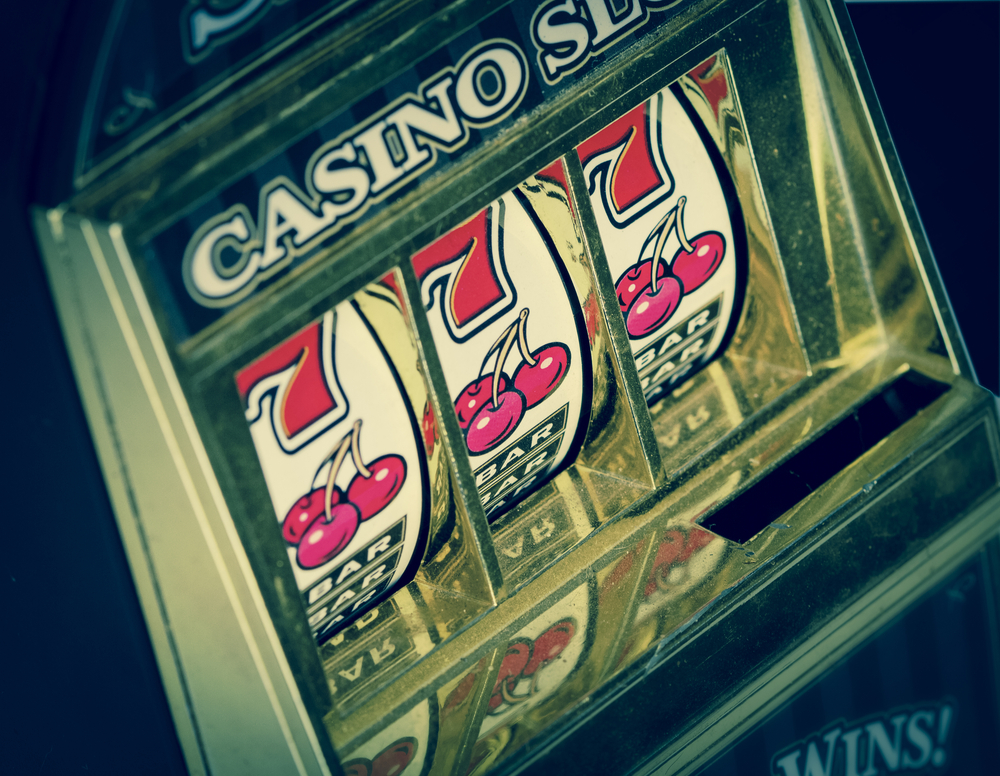Where did the idea of putting fruit in a fruit machine come from? The history of today’s fruit machine is a story about chewing gum, free beer, and legal loopholes.
In 1891 Sittman and Pitt of Brooklyn, New York, developed a gambling machine, the precursor to the modern slot machine, and the fruity’s great grandfather. The original game contained five drums holding 50 playing cards and was based on poker. Why not all 52 cards? To give the house the edge, of course. With the ten of spades and jack of hearts removed, the odds of landing a royal flush were cut in half. Regardless, the machine proved extremely popular and could soon be found in bars all over the city. Players would insert a nickel and pull a lever, which would spin the drums and the cards they held, while the player crossed his fingers for a good hand.
The original machines had no payout mechanism, so a pair of kings might get the player a free beer, whereas a royal flush could pay out cigars or shots, the prizes wholly dependent on what was on offer at the bar. Due to the vast number of possible wins with the original poker card based game, it proved practically impossible to come up with a way to make a machine capable of making an automatic payout for all possible winning combinations.
In the late 1800s, Charles Fey of San Francisco, California, devised a much simpler machine called the Liberty Bell, with three spinning reels containing only five symbols: diamonds, hearts, horseshoes, spades, and the namesake Liberty Bell. By replacing ten cards with five symbols and using three reels instead of five drums, the complexity of reading a win was vastly reduced, allowing Fey to devise an effective automatic payout mechanism. Liberty Bell was a huge success and spawned a thriving mechanical gaming device industry.
Other early machines, such as the trade stimulator, gave out winnings in the form of fruit-flavoured chewing gums with pictures of the flavours as symbols on the reels. The popular cherry and melon symbols derive from this machine. The BAR symbol now common in slot machines was derived from an early logo of the Bell-Fruit Gum Company. The payment of food prizes was a commonly used technique to sneakily avoid laws against gambling in a number of American states.
In 1963, Bally developed the first fully electromechanical slot machine, called Money Honey. The state-of-the-art technology allowed Money Honey to be the first slot machine with a bottomless hopper and automatic payout of up to 500 coins without the help of an attendant. The popularity of this machine led to the increasing predominance of electronic games, and the side lever soon became vestigial.

During the 1960s electric gambling machines were exported to the UK, featuring many of the popular fruit symbols we recognise today. However, UK gambling law was very clear about the nature of automatic gambling machines and they were not allowed in pubs. The crux of the law revolves around the level of interaction while gambling. Automatic gambling machines were illegal for sure, but what if you could show that fruit machines were games of skill? Time for some more legal sneakiness.
To add an element of interactivity to a gambling machine, Trevor Carter, co-founder of Carfield Engineers Ltd introduced the Nudge button. Thanks to the Nudge button, a fruit machine transformed from being a totally random betting machine to a game of skill. Strategic use of Nudges and later, Holds, allowed fruit machines to slip through the legal net and be enjoyed with a pint in your local pub.
As technology advanced through video and digital machines, the fruit was joined by popular cultural franchises from The Addams Family and Terminator, to the ubiquitous Deal or No Deal. Each one featuring their own graphics and sounds, but still retaining a little bit of their heritage.
So there you have it! Thanks to chewing gum and a little ingenuity, we have the fruit machine you enjoy today.





Comments are closed.